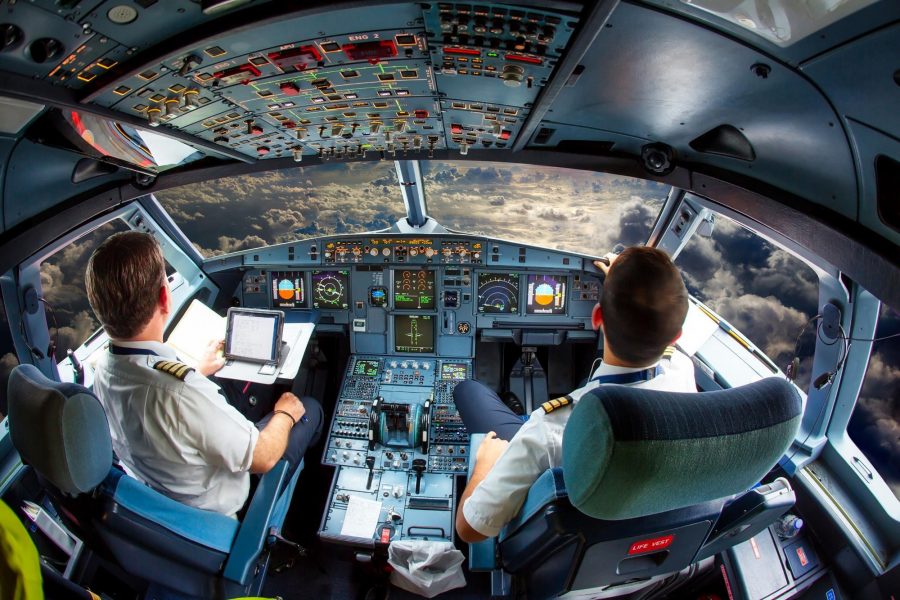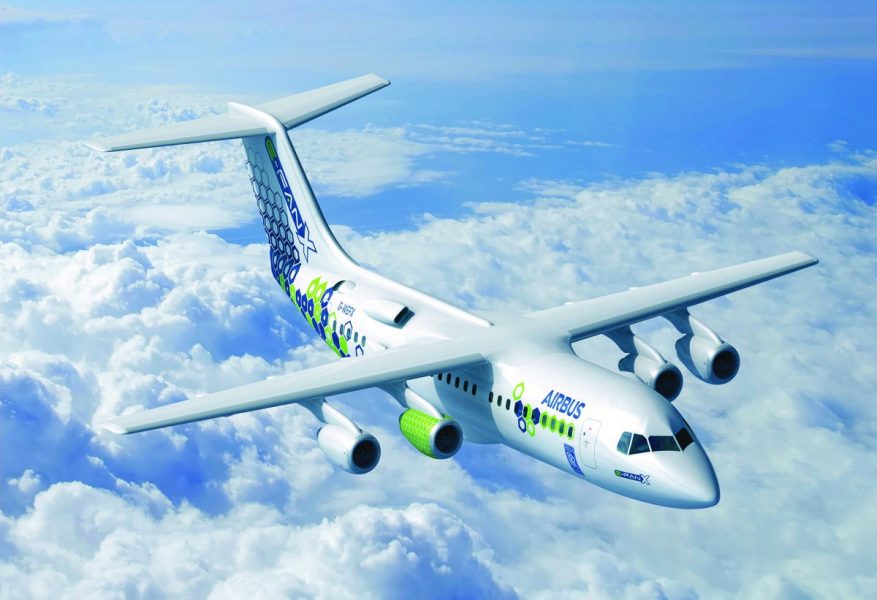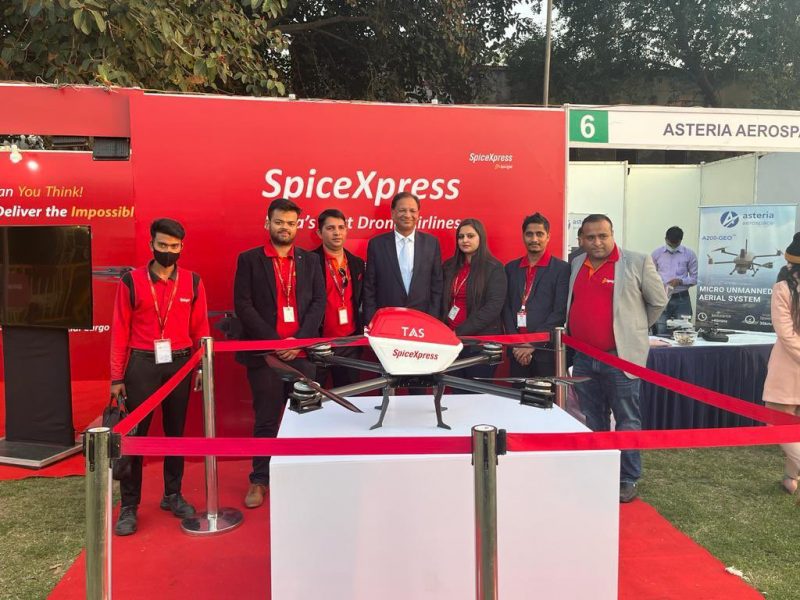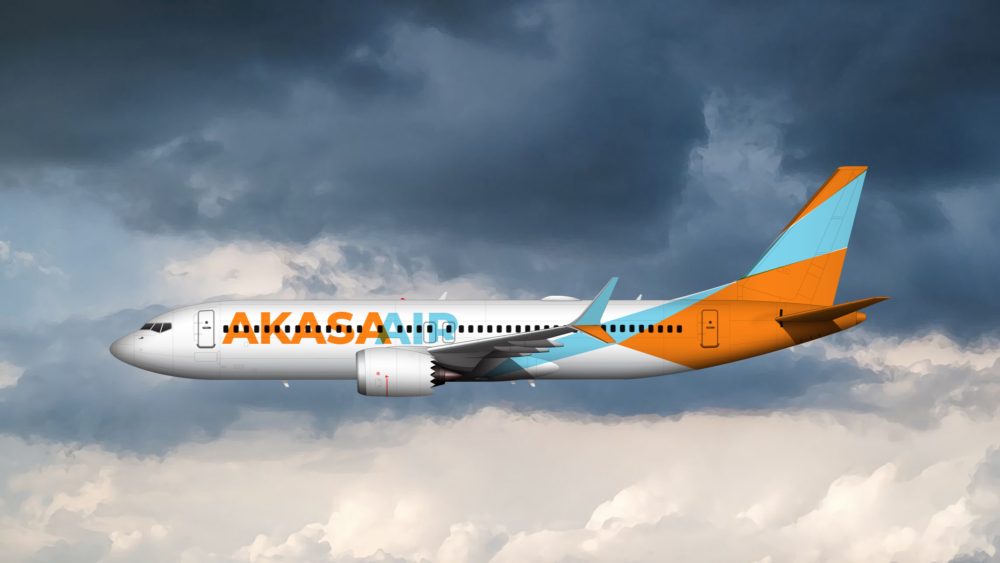Covid wreaked havoc on the airline industry, but not on pilots' dreams as most CPL issued this year
Radhika Bansal
14 Dec 2021

Around 40% of commercial pilot licenses issued by Indian aviation regulator DGCA were to cadets trained in foreign flying schools, Minister of State for Civil Aviation V K Singh said on Monday, December 13. However, the Centre has taken certain steps to achieve increasing the number of Indian-trained pilots, Singh told Rajya Sabha.
The minister, in a written reply, said the Airports Authority of India (AAI) had on September 25, 2020, come up with a liberalised flying training organisations (FTO) policy wherein the concept of airport royalty — revenue share payment by FTOs to AAI — has been abolished and land rentals have been significantly rationalised.
(Image Courtesy - Travel + Leisure)
He said the AAI issued award letters on May 31 and October 29 for nine FTOs to be established at five airports in Belagavi (Karnataka), Jalgaon (Maharashtra), Kalaburagi (Karnataka), Khajuraho (Madhya Pradesh) and Lilabari (Assam). The soft launch of two FTOs at Kalabuargi was done on August 15 under the liberalised policy, Singh said.
"India's largest flying academy — Indira Gandhi Rashtriya Udan Akademi (IGRUA) at Amethi (Uttar Pradesh) — has been permitted to carry out pilot training in Gondia (Maharashtra) and Kalaburagi (Karnataka) to enhance its flying hours and aircraft utilisation, which get severely affected during winter months due to visibility issues," the minister said.
The pandemic may have crippled aviation but it has not clipped the wings of wannabe aviators. India will issue its highest ever number of commercial pilot licences (CPL) in a calendar year in 2021.
Till November 23, the Directorate General of Civil Aviation (DGCA) had issued 756 CPLs and with over a month to go, the year will end at a higher number. The previous high, 744, was seen in pre-pandemic 2019, with the figure falling to 578 in 2020 due to lockdowns.
“The pandemic has seen airlines lay off pilots, slash their salaries and delay payments. Yet that did not dampen the spirits of budding pilots, despite the steep cost of training to become a pilot. The general feeling is that the pandemic will someday be over, travel will be back, people will fly and pilots needed,” said a senior official about the record-setting 2021.
"I saw tremendous interest in choosing this path during the pandemic 2021. Every year there are some candidates from the selected list who do not turn up to join the CPL course and we have to turn to names in the first and second standby lists. This year everyone on the merit list turned up to join the course and we did not have to go to the standby lists. I am told other flying training organisations (FTO) had the same experience this year.It takes about two years to earn a CPL with the cost ranging from INR 37-38 lakh to INR 47 lakh for the course fee. A CPL from government-run IGRUA costs INR 45 lakh.The general feeling is that you can get a CPL quicker abroad. But in return, the conversion of the foreign CPL to an Indian DGCA-issued CPL also takes time as some exams have to be passed. So the time difference is not much (for those going abroad) but the cost difference is steep."Krishnendu Gupta, Director, Indira Gandhi Rashtriya Uran Akademi (IGRUA)
The share of DGCA CPLs being issued to cadets from foreign FTOs has declined this year due to continuing international travel restrictions. The share of DGCA CPLs issued to those trained at Indian FTOs is the highest ever this year.
Gupta says the overall cost of pilot training till type rating (training to fly a particular type of aircraft like Airbus 320 or Boeing 737) costs about Rs 75 lakh for some who has done CPL in India. This cost is over a crore from someone doing CPL from abroad.
Under its aatmnirbhar plan, the government will have more flying schools in India. “The set-up of eight FTOs is aimed at making India a global flying training hub and to prevent the exodus of Indian cadets to foreign FTOs,” the aviation ministry had said in a statement this summer.
Foreign licence holders need to clear DGCA exams for an Indian licence and the new system will also reduce the waiting time for such candidates
Between 2016-2020, DGCA issued around 3,000 commercial pilot licences. These included licences issued upon training in India and conversion of foreign licences.
Read next
Hydrogen power may be the next big thing but not without its share of cons
Prashant-prabhakar
14 Dec 2021

With everyone getting on the "sustainability" bandwagon, the buzz is rife that hydrogen-powered aircraft are paving the way for zero-carbon aviation by 2050.
Why switch to hydrogen?
A fully fueled B787-10 can roughly fly 8000 miles with 300 passengers on board.
Aviation International News
A battery with equivalent energy to that will weigh about 6 million pounds! Weight and balance are of paramount importance in aviation hence we don't have a lot of electrically powered aircraft (although that is changing slowly now).
Battery-powered aircraft | Representative | GeekWire
Engineers, therefore, have turned to hydrogen, as the next viable option to promote greener and cleaner aviation.
Aviation is touted to contribute to 3-4% of global CO2 levels. When generated from renewable energy sources, hydrogen is said to be one of the most promising technologies to combat global aviation climatic impact.
In comparison to jet fuel, it delivers almost thrice as much energy per unit mass and 100 times more than lithium-ion batteries, making it perfect for powering aircraft.
However, are they really that perfect though?
Hydrogen, though a supposedly cleaner alternative, has its share of cons too. Although it provides more energy by mass than jet fuel, it delivers less by volume.
To achieve the same amount of energy as one litre of kerosene fuel, about 3,000 litres of gaseous hydrogen would be required, thereby adding to the overall weight and volume of an aircraft.
One alternative would be to slash down the temperatures, critically low, at -253°C, converting hydrogen into liquid. Another way would be to pressurize the gas further down to 700 bars, bringing the 3000L to just 6L.
Now, here's the kicker. Maintaining extreme low temperatures requires very special storage tanks.
Now we all know Cryogenic liquid hydrogen storage tanks are used for rocket missions. Though it might be tempting to think to use the same cryogenic tanks for aviation, safety requirements for commercial aircraft are different.For instance, hydrogen tanks in aviation would have to endure approximately 20,000 take-offs and landings and would need to keep the hydrogen in the liquid state for much longer.
Hence Airbus, as a part of its commitment towards cleaner aviation, has joined ongoing efforts to improve existing hydrogen storage technology.
AIRBUS ZEROe | Zero-emission concept | Aerospace America
Airbus is now designing cutting-edge liquid hydrogen tanks to facilitate a new era of sustainable aviation.
Airbus
Reportedly, research and development hint at the possibility of metallic liquid hydrogen tanks for civil aviation while further down the line, easy-to-manufacture, lightweight composites may be used.
Cryogenic fuel tanks | Wikipedia
Adapting cryogenic tank technology for commercial aircraft represents some major design and manufacturing challenges. The new Airbus ZEDCs will host multidisciplinary engineering teams to create innovative solutions that will meet demanding aerospace requirements.David Butters, Head of Engineering for LH2 Storage and Distribution, Airbus
All ZEDCs are expected to be fully operational and ready for ground testing with the first fully functional cryogenic hydrogen tank during 2023, and with flight, testing starting in 2025
Did you know? ZEDCs is an acronym for Zero Émission Development Centre based in France and Germany.
Source: Airbus
COVER: PAX News
Read next
Six of SpiceJet's 13 Boeing 737 Max aircraft have begun flight operations
Radhika Bansal
14 Dec 2021
Six out of a total of 13 of SpiceJet's 737 Max aircraft have started operating commercial passenger flights, Minister of State for Civil Aviation V K Singh said on Monday, December 13.
All Max planes were grounded in India by the Directorate General of Civil Aviation (DGCA) on March 13, 2019, three days after the crash of an Ethiopian Airlines 737 MAX plane near Addis Ababa, which had left 157 people, including four Indians, dead.
After Boeing made necessary software rectifications, the DGCA had on August 26 this year lifted the ban on Max planes' commercial flight operations. SpiceJet had resumed operating its Max planes for commercial flight operations last month.
In a written reply in Rajya Sabha, Singh said on Monday, December 13, "Out of 13 grounded Boeing 737 Max aircraft of Spice Jet, six aircraft have been put into operations along with the return to service actions after modifications as mandated in EASA's AD (European Union Aviation Safety Agency's airworthiness directive)."
SpiceJet, the only operator of Max planes in the country, had signed a USD 22 billion deal with Boeing for 205 aircraft in 2017 and has 13 of these planes in its fleet at present.
SpiceJet had on December 9 said that one of its 737 Max planes, which was heading from Mumbai to Kolkata, returned to Maharashtra's capital city due to a "technical issue".
The Directorate General of Civil Aviation (DGCA) on December 10 has launched an investigation into December 9’s incident wherein SpiceJet’s Max aircraft conducted an emergency landing at the Mumbai airport after one of its engines faced a technical issue. Moreover, the regulator has asked the airline, aircraft manufacturer Boeing and engine maker CFM to join the probe and provide all information regarding the engine snag.
Read next
SpiceJet intends drone delivery service in remote areas for medical and essential supplies
Radhika Bansal
13 Dec 2021

SpiceJet on Saturday, December 11 said it plans to introduce a drone delivery service to transport vaccines, life-saving medicines and essential goods. The budget carrier said it has partnered with Throttle Aerospace for more than 50 customised high-end drones, while Aeologic will provide drone software management.
In a statement, SpiceJet said, it plans to introduce customised drones of different payloads, including 0-5 kg, 5-10 kg and 10-25 kg, which have the potential to change India's supply chain capabilities. The airline said it initially plans to target mid-mile drone deliveries while preparing for last-mile deliveries in future.
https://twitter.com/flyspicejet/status/1470046333553631232
“SpiceXpress (the airline's logistics arm) will focus on delivering vaccines, life-saving drugs and essential goods among others to the remotest and farthest corners of the country which is otherwise difficult to reach by the traditional means of transportations,” it mentioned.
The airline's initial outreach plan for its drone business encompasses 10 districts with over 150 locations to achieve over 25,000 deliveries per month, it noted. SpiceJet will also set up dedicated drone ports at strategic locations across the country.
In 2020, a SpiceXpress-led consortium had submitted a proposal to the Directorate General of Civil Aviation (DGCA) for conducting experimental Beyond Visual Line of Sight (BVLOS) drone operations in response to a DGCA notice inviting Expression of Interest.
SpiceJet has partnered with Throttle Aerospace for more than 50 customized high-end drones while Aeologic will provide the drone software management.
Based on the recommendations of the BVLOS Experiment Assessment and Monitoring Committee, SpiceXpress was granted formal permission by the regulator for conducting experimental BVLOS drone trials in May 2020.
“SpiceJet continues to innovate and experiment with new technologies and we hope to introduce our drone delivery services soon. By inducting drones in the supply chain, SpiceJet's logistics arm, SpiceXpress, will take a massive technological leap which will change the game for fast and cost-effective logistics in India.This will not just redefine the entire supply chain business but also offer a unique experience to the end consumer.With drones entering the logistics business, our fast emerging and growing e-commerce industry will be able to access the remotest corners of the country."Ajay Singh, Chairman and Managing Director, SpiceJet
“Throttle Aerospace has successfully completed 100 hours of testing based on the recommendations of the BVLOS Experiment Assessment and Monitoring Committee,” the airline said.
Earlier, SpiceJet showcased its drone delivery capabilities at the Gwalior Drone Mela in presence of Madhya Pradesh Chief Minister Shivraj Singh Chauhan, and Union Civilian Aviation Minister Jyotiraditya Scindia.
Read next
If reports are to be believed, Akasa-the upcoming Indian ultra-low-cost carrier (ULCC), is expected to start operations in the summer of 2022 with a fleet of new Boeing 737 MAX aircraft. The airline, registered as SNV Aviation, having received its initial No-Objection Certificate (NOC) on October 11, may well get its Air Operator's Permit (AOP) by April of next year
Rakesh Jhunjhunwala reportedly has a 40% stake in Akasa | Officechai
On the other hand, the now-defunct Jet Airways, which ceased operations in April 2019, is unlikely to get its AOP, considering it was made dormant months after it stopped operating.
Aviator Hub
We had called them once to submit their business plan. They never came for the meeting. I believe the plans are stuck internallyA top government official said on conditions of anonymity
A Jet Airways spokesperson didn't immediately respond to queries until press time on Sunday.
The new owners of Jet 2.0- a consortium of London's Kalrock Capital and Dubai base Indian businessman Murari Lal Jalan had deferred operations for the fourth time in September.
The airline has placed an order for 72 737 MAX planes which would be ultimately powered by CFM engines.
COVER: Simple Flying
Read next
The Madras High Court has stayed its earlier order of winding up SpiceJet and the airline will soon initiate "appropriate remedial steps including preferring an appeal" against the order before a higher bench, the company said on Tuesday, December 7.
In a filing to BSE, the budget carrier said the Madras High Court had on Monday, December 6 issued an order of "winding up SpiceJet and appointment of official liquidator" in a case filed by Credit Suisse claiming non-payment of USD 24.01 million dues to engine maintenance services firm SRT Technics.
Madras High Court (Image Courtesy - The Indian Express)
"The Madras HC despite holding that SRT did not have a valid authorization from DGCA to carry out engine maintenance during the currency of the agreement rejected the company's defence and ordered winding up of the company and directed the official liquidator to take over the assets of the company," SpiceJet noted.
However, on the same day, the Madras High Court issued another order wherein it stayed its previous order and gave SpiceJet "three weeks, subject to the condition that the company deposits the amount equivalent to USD 5 million within two weeks.""The Company is examining the order and shall initiate appropriate remedial steps including preferring an appeal before the appellate jurisdiction within the time frame allowed by the Madras High Court," SpiceJet noted.
The carrier further said it has a good case on merits and was hopeful of having a favourable outcome in the appeal.
SpiceJet reported a net loss of INR 934.8 crore and INR 998.3 crore in 2019-20 and 2020-21, respectively. It had reported a net loss of INR 729 crore for the quarter ending June 2021 as its flight operations were affected due to the second wave of the COVID-19 pandemic.
Spice Jet had announced earlier that it would file an appeal in the Madras High Court against an order of the single bench of the high court directing the airline to wind up its operation.
Justice Subramaniam of the Madras High Court had on Monday, December 6 ordered the airline company to wind up its operation over its failure to make payments to a Swiss Maintenance, Repair, and Overhaul (MRO) service provider.
The Zurich-based MRO service provider, SR Technics, had claimed that the Spice Jet owes around 24 million US dollars and that it has a ten-year contract with the airline company. The MRO company had assigned Credit Suisse AG the right to receive payments on behalf of SR Technics and the single bench of the Madras High Court had responded to its appeal and ordered the winding up of Spice Jet.
Spice Jet had argued in the court that SR Technics did not possess the approval from the Director-General of Civil Aviation (DGCA) from 2009 to 2015 but the court did not heed to the argument and said that the airline had availed of the services of SR Technics.
The airline company also argued that the Swiss company had made a "fraudulent misinterpretation" of having the DGCA approval and argued that this was against the Indian and other applicable laws and that this has led to the entire agreement being pointless or unnecessary.



Comment